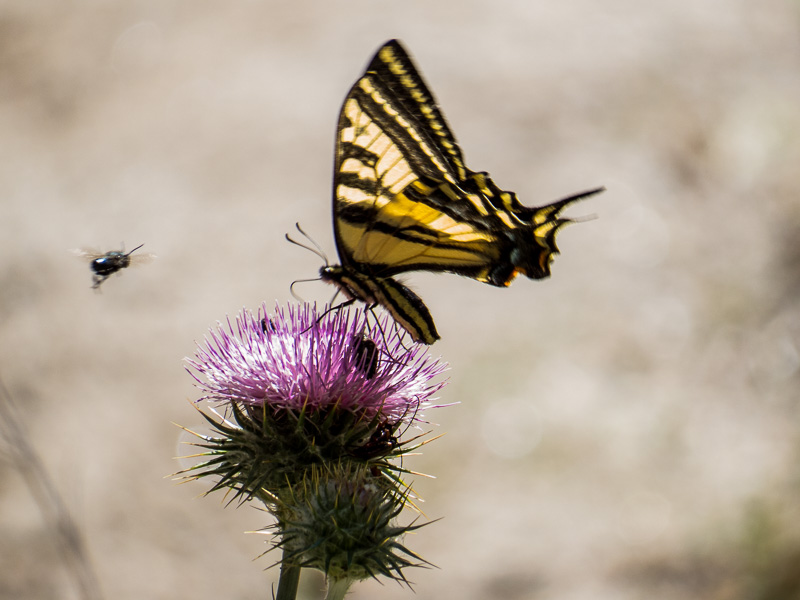Gardening is a lot of fun, but it is also a lot of work. Based on my experience the work component can be more or less difficult depending upon the garden’s location. In the desert, there seems to be an ongoing struggle during the warmest months.
There are roadside sunflowers along the trails and highways of Sonoran Desert that seem to tolerate the harsh growing conditions. After seeing this desert-adjusted specimen growing in the Phoenix area, I decided to try to grow the more showy, standard sunflowers in our cultivated garden.
My main concern was the sun’s intensity. Heat is one thing, but the searing intensity of the sun’s rays is another. There can be a more than one hundred days with temperatures of one hundred degrees or more. The one factor in my favor is that our gardens receive irrigation and drought will not be a factor for this experiment.
With this idea in mind, I visited one of our local stores and purchased a package of mixed sunflower seeds. I wanted a selection that would perhaps offer up at least one variety that is less prone to fail under our extreme conditions.
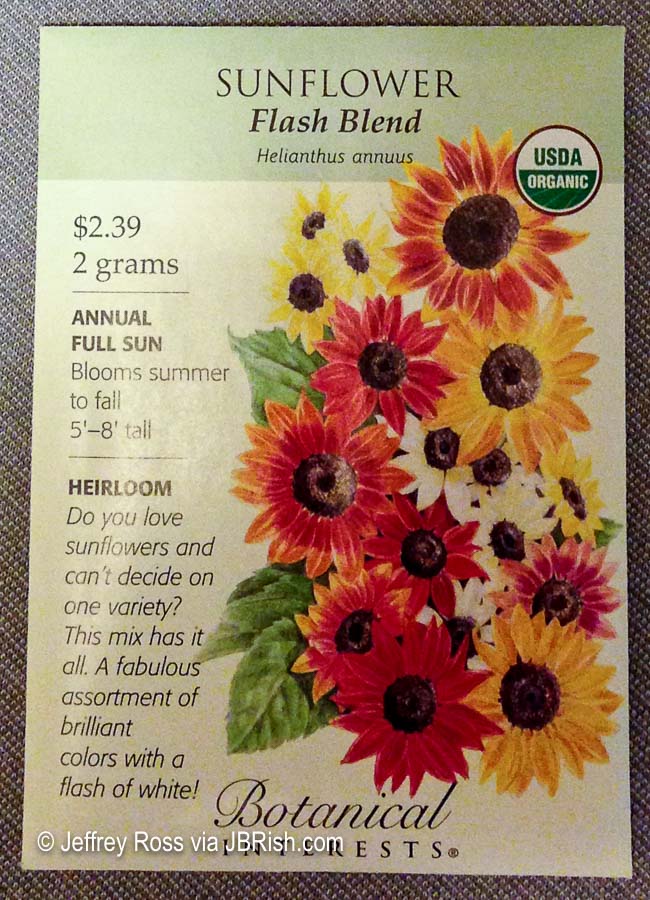
The package indicates that the plants will bloom from summer to fall, but I did not anticipate that long a blooming season in the desert ecosystem.
This is our second year growing these sunflowers. Each spring we pour a selection into a container and make our choice of five random seeds. Once they become viable seedlings, we select the strongest three for final planting.
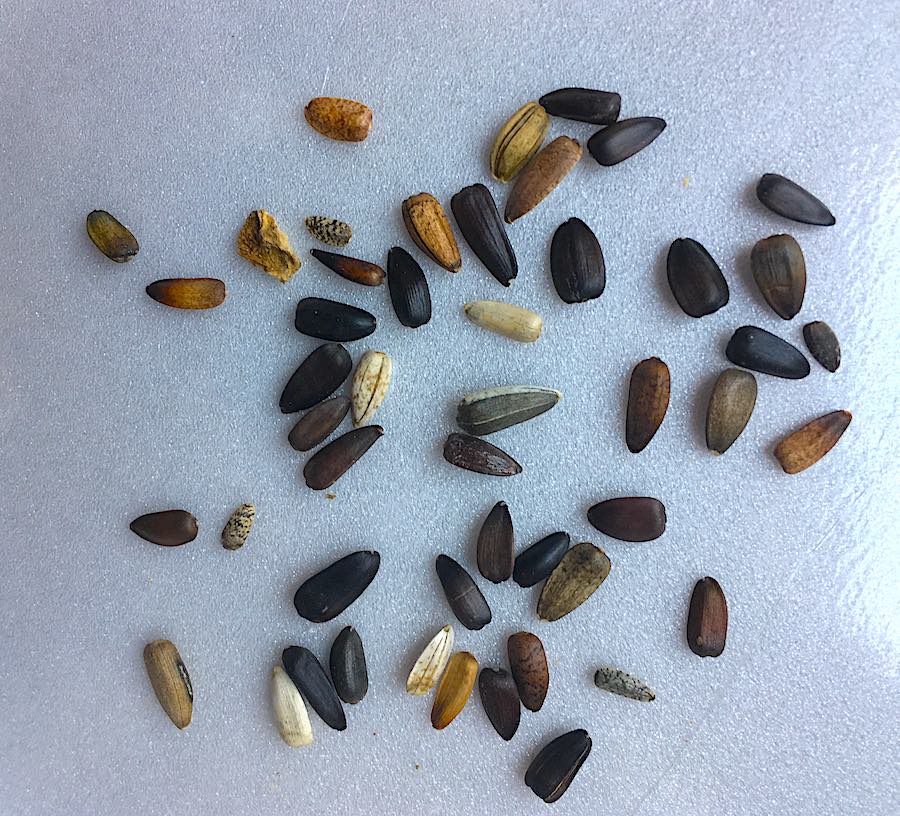
This year we had a false start because a large squirrel entered our courtyard and devoured our first group of sunflower seedlings. You can read about that HERE.
Bushy-tailed squirrels are not the only culprits in an area where nutrients and water are scarce. Birds, lizards and a variety of rodents prowl the premises looking for greenery to eat. Packrats are especially problematic because of their size and climbing ability.
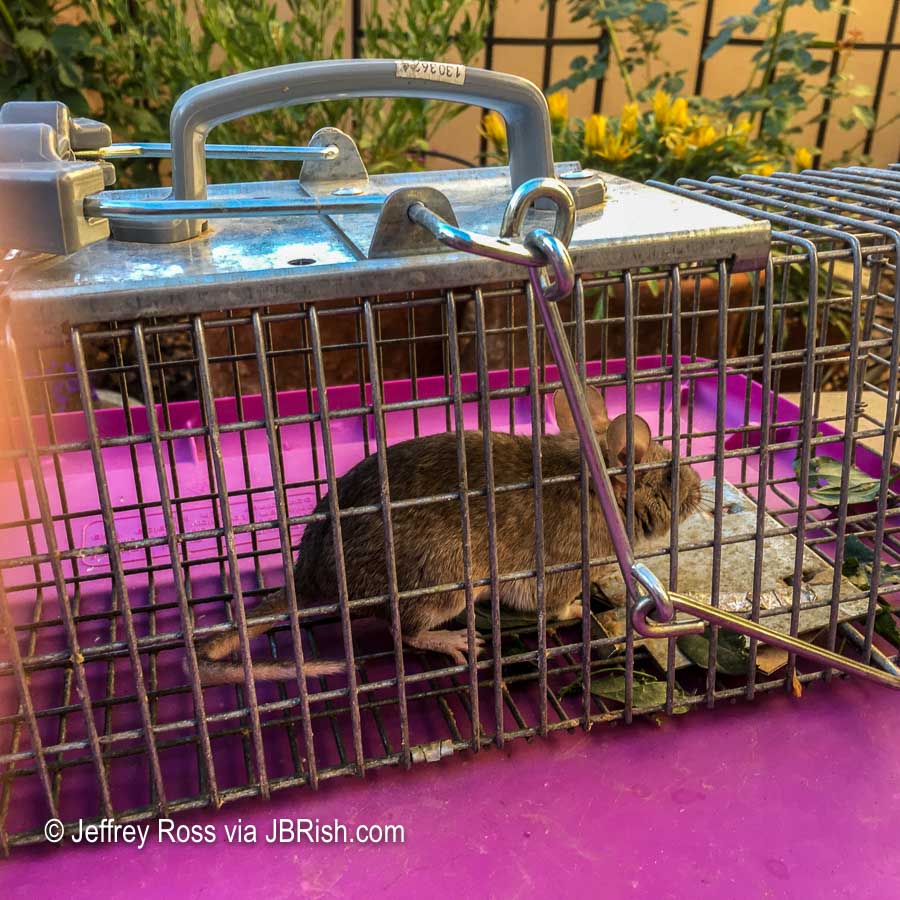
Did I mention rabbits? There is an abundance of rabbits in our neighborhood and they constantly probe our gardens for weaknesses to exploit.
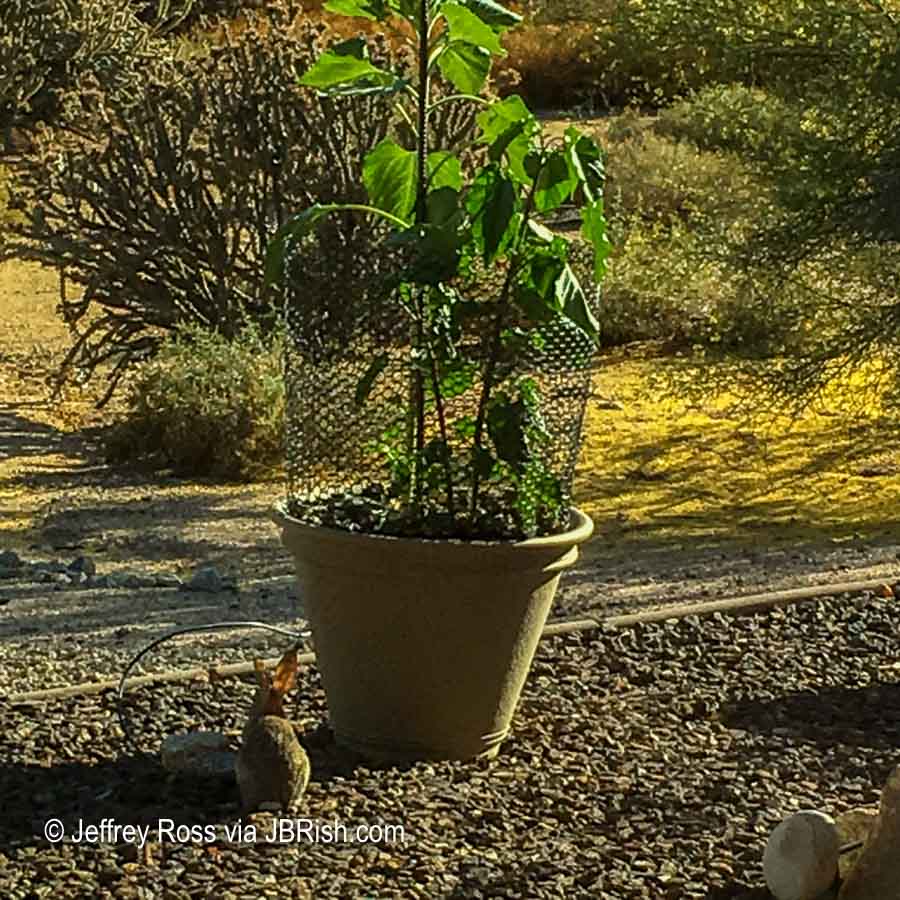
The situation is not insurmountable, but vigilance is the key. Every day I make the rounds of our gardens to check for damage or potential breeches in our “bulwarks.”
Last year we had two sunflowers from our chosen group that stood out.

This multi-headed beauty enhanced our front courtyard for a number of weeks.
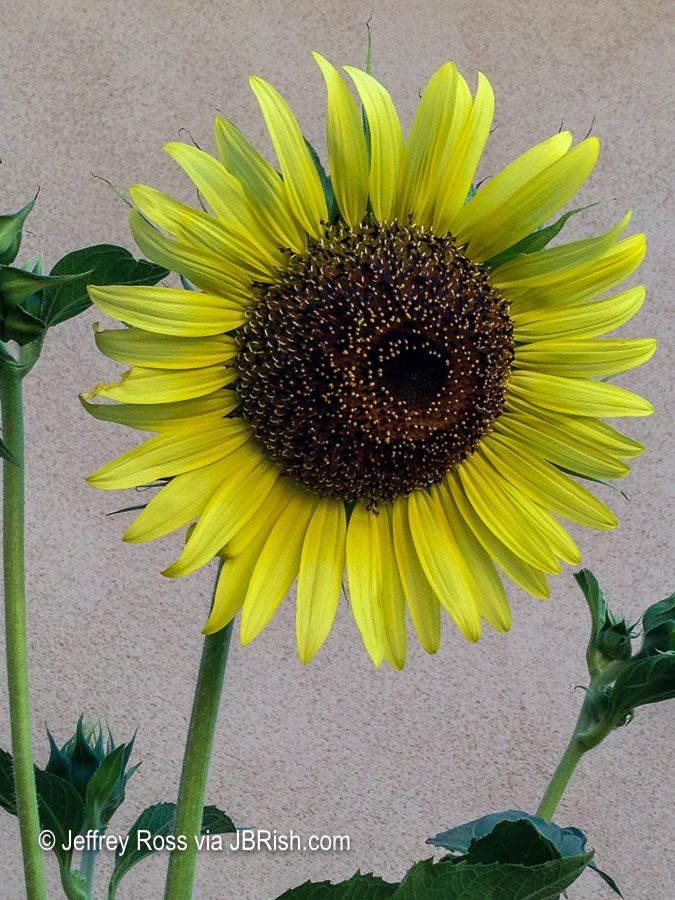
Another seed produced a plant that yielded a single and rather unremarkable flower which was disappointing. Our last chosen seed graced our rear patio with an orange-hued flare. While it did not flower as long as the courtyard specimen, it did give us several nice blooms.

After the destruction of our initial plantings by the squirrel this year, I started additional sunflower seedlings. I was concerned that we missed the best growing window with moderate temperatures, but we had little to lose.
After careful cultivation and coddling, we were able to appreciate the fruits of our labor.
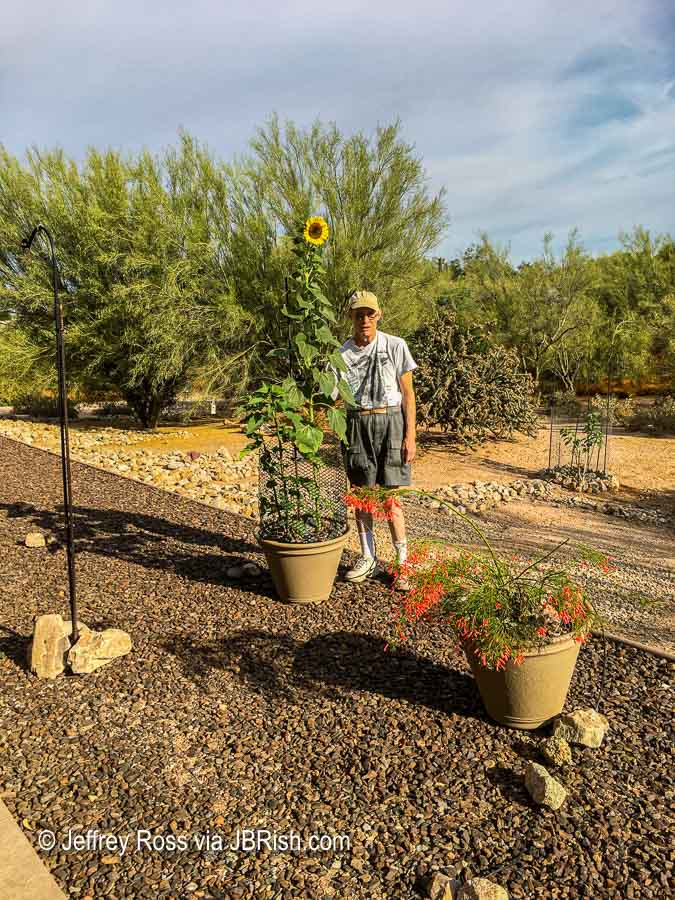
As we were about to leave for a one week, out-of town visit, we watched this one bud get larger and larger and hoped that it would bloom prior to our departure. Sure enough, the day before we left, the flower opened. The plant is a bit taller than I am in the picture above and considering that it is in a pot, I estimate it was 6’3″ tall; give or take.
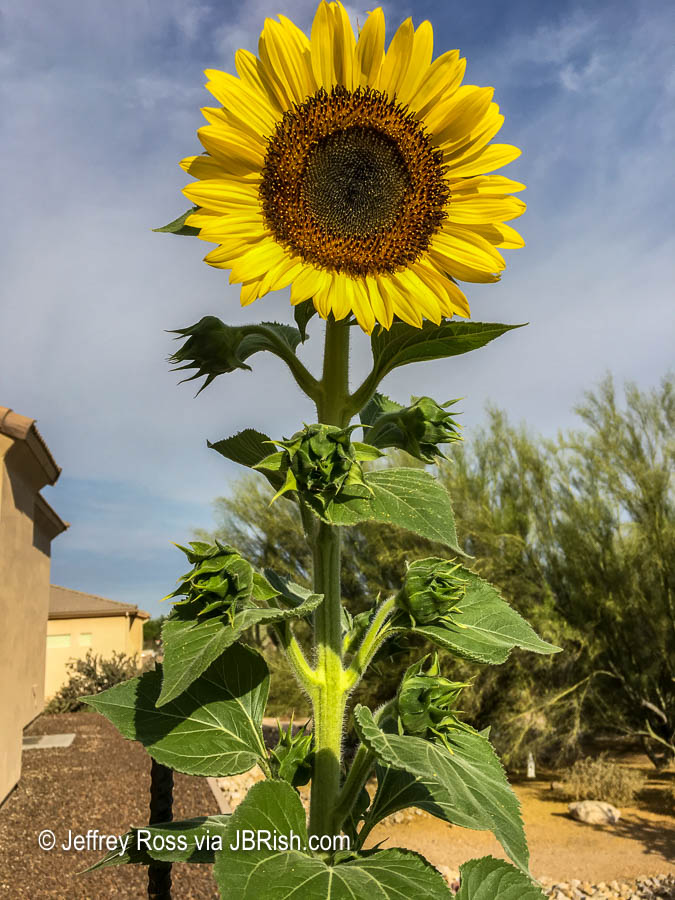
The close up view (above) shows that there were more flowers to come and we hoped they would survive our time away. Upon our return a week later, we were greeted with this…

This morning, I was making the rounds in our front garden where we have two other sunflower specimens progressing toward their blooming stage and I noticed that there was some destruction on one of them.

We have cutter bees in our town and there is little gardeners can do to prevent their damage. They cut circular patterns in the leaves, but they are relatively small circles or semi-circular holes. I knew this was not their work.
Then I noticed these black dots on some lower leaves
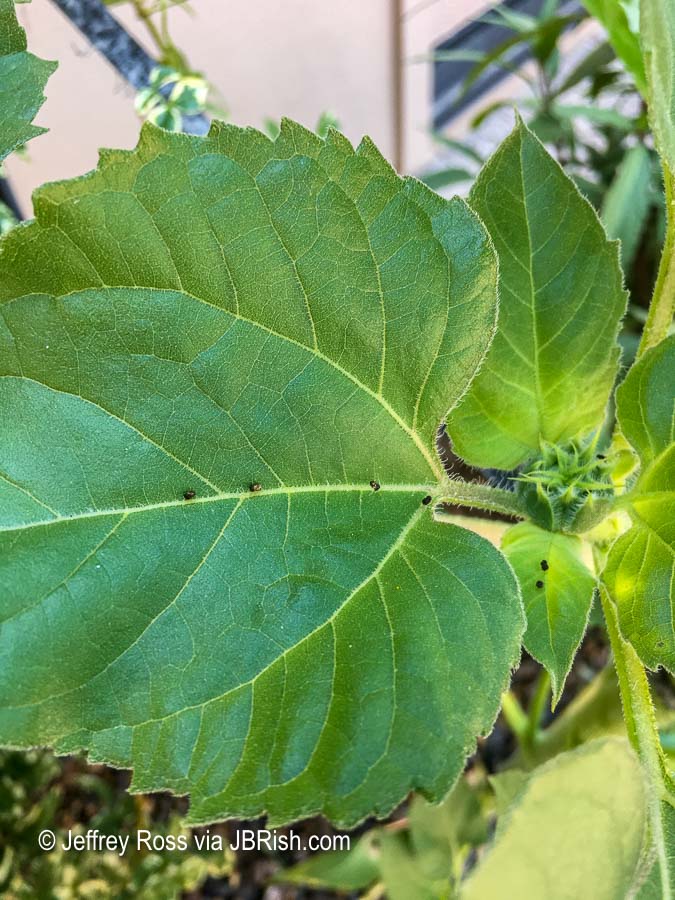
and around some of the large buds heads.
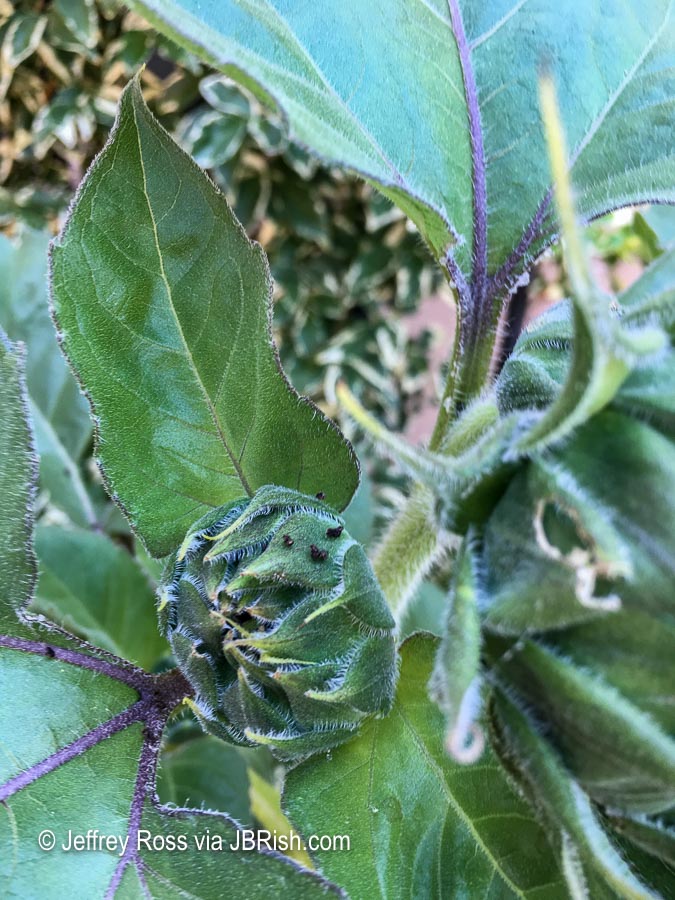
This was a sure sign of a caterpillar, i.e. a larva of a butterfly or moth. Sure enough, I hunted it down and sent it packing! The plant will do fine as long as I continue to monitor the situation and prevent other significant damage. The caterpillar did not eat any of the buds, practically destroyed the one leaf pictured above, but did little else to the plant.
It was not all dismay and gloom with the courtyard sunflowers as this beauty opened this morning.
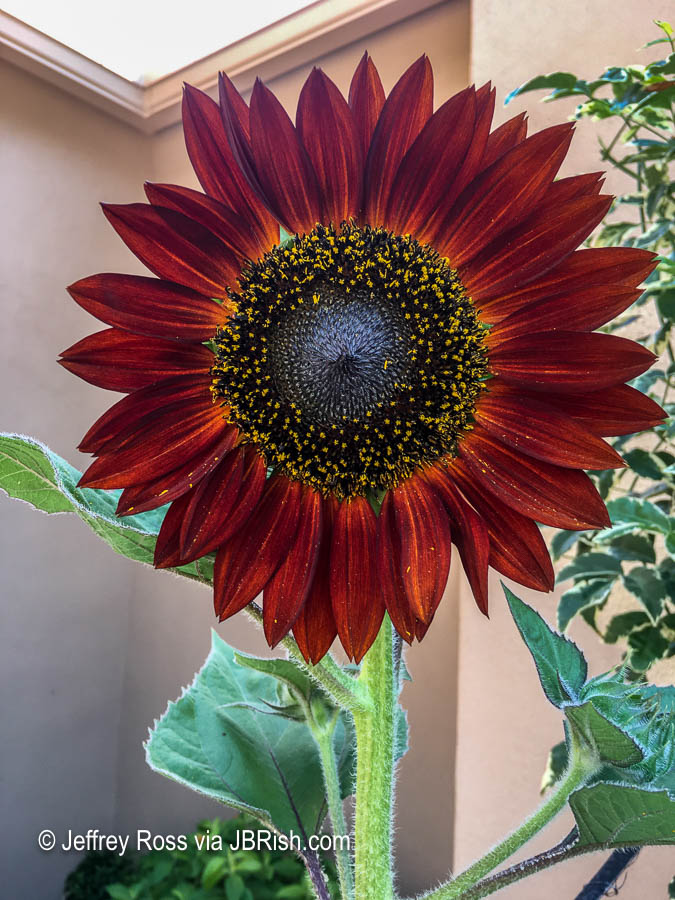
It was a deep, burnt orange color; nearly red. If it produces well, I might try to collect some seeds from it for next year although it may be cross-pollinated and not true to the mother plant. It would most likely have strong color.

I don’t know if we will continue to grow the showier cultivars of the sunflower family, but it has been fun and fills our mornings with hope that we will be greeted with yet another marvelous flower.
**********
All original content on this blog is copyrighted by Jeffrey B. Ross with ALL Rights Reserved. While reference links back to JBRish.com are appreciated and encouraged, please acquire approval for any reproduction of original content from this website.
©Jeffrey B. Ross 2014 – 2019 – JBRish.com

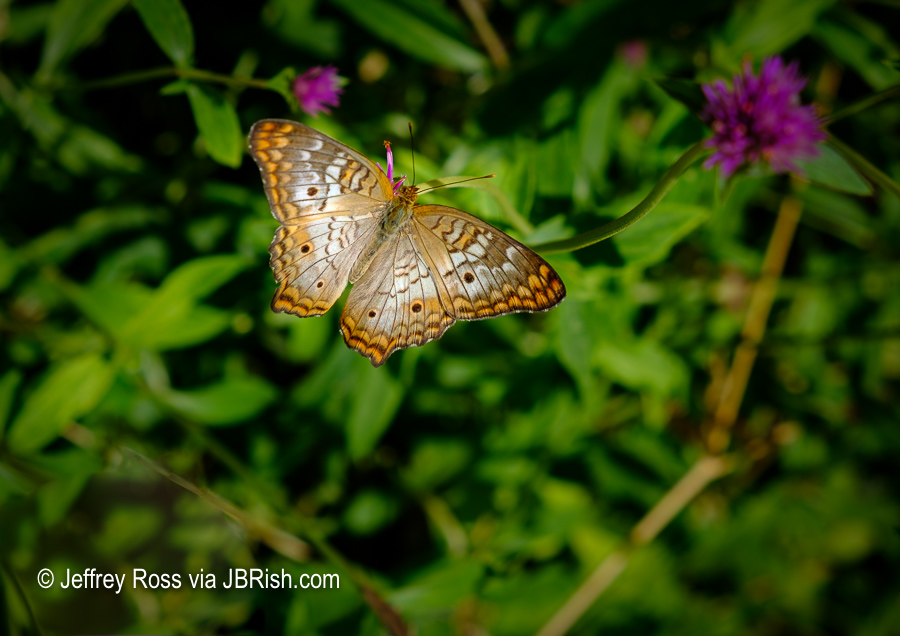

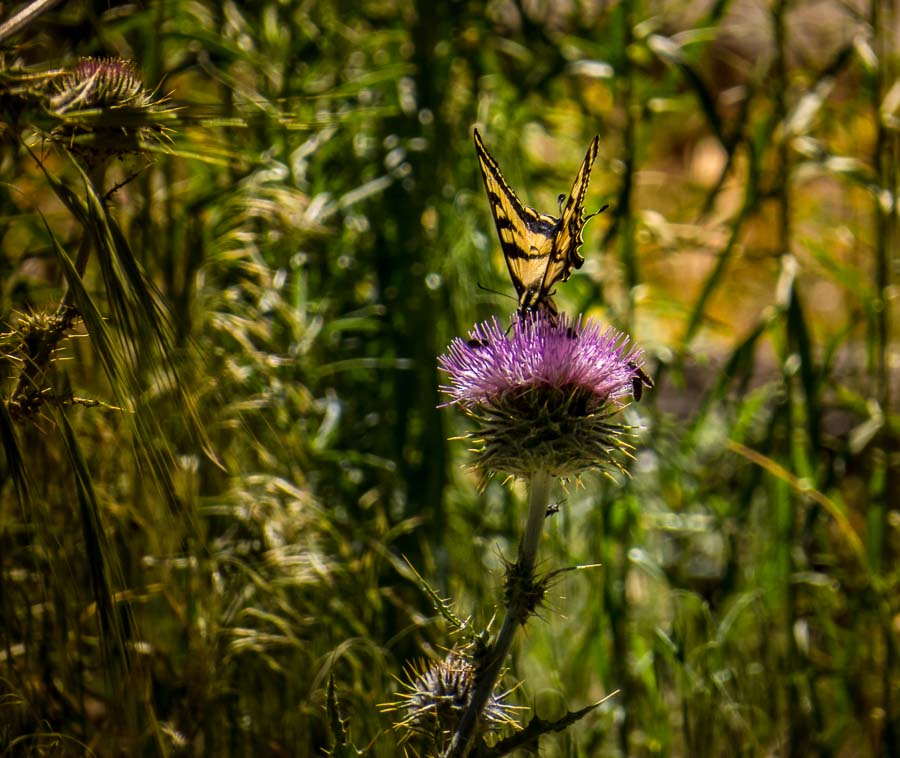 Butterfly enjoying a thistle along the Valley Loop Trail
Butterfly enjoying a thistle along the Valley Loop Trail